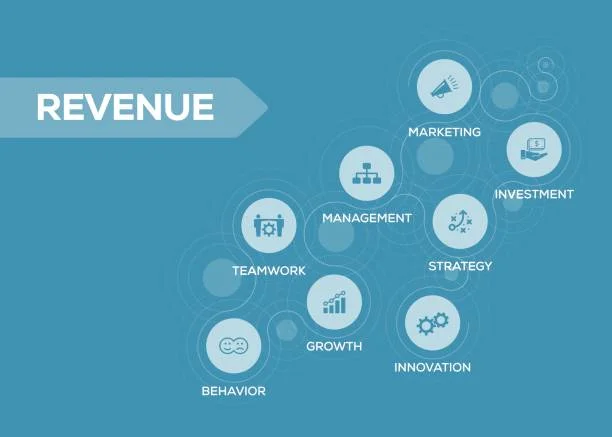Every company starts with a vision. A bold idea to solve a problem, serve a niche, or disrupt a market. Yet, somewhere between that spark and sustainable growth, many great ideas lose momentum. The reason isn’t always the product or the market; it’s the missing bridge between the two: a clear go-to-market (GTM) strategy.
A GTM strategy defines how your business reaches its audience, delivers value, and turns potential into profit. It’s the roadmap that connects insight to execution, ensuring every team, message, and campaign moves in the same direction. Without it, even the most innovative solutions risk getting lost in the noise of competition.
In this guide, we will explore how growth-minded teams can turn their vision into a structured, repeatable path to market success. From understanding your audience to aligning your internal teams and using data for continuous optimization, this is your practical go-to-market guide for growth, designed to turn strategy into measurable results.
Dive deeper into insights that matter—check out our related posts now!
Step 1: Define Your Market and Audience
Every successful go-to-market strategy begins with clarity, knowing who you’re selling to, why they need your solution, and where to find them. Often businesses rush to launch campaigns before validating their audience assumptions. The result? Misaligned messaging, wasted spend, and missed opportunities.
Start by identifying your Ideal Customer Profile (ICP): the type of organization or individual most likely to gain measurable value from your product. Consider factors like industry, company size, pain points, and purchasing authority. Then, build buyer personas to humanize those insights: what motivates them, how they define success, and which challenges they’re actively trying to solve.
Once your ICP and personas are clear, validate them with real data. Look at existing customer segments, analyze website and CRM insights, and even interview users to understand their journey. The more grounded your understanding, the sharper your market focus becomes.
Remember, defining your audience isn’t a one-time task. Markets evolve, competitors pivot, and customer priorities shift. Revisiting your segmentation regularly ensures that your GTM plan grows with your business, not against it.
Step 2: Align Teams Around Shared Goals
A go-to-market plan doesn’t live in the marketing department. It lives in the collaboration between marketing, sales, product, and customer success. The most common reason GTM strategies fail isn’t lack of ideas; it’s lack of alignment. When each team operates on different definitions of success, even the best strategy fragments before it gains traction.
Start by setting shared objectives and key results (OKRs) that tie directly to your business outcomes. For example, instead of marketing focusing solely on lead volume while sales measures only closed deals, create unified goals like qualified pipeline growth or conversion rate improvement. These shared metrics help every team see how their work contributes to the bigger picture.
Communication also plays a central role. Regular cross-departmental check-ins ensure that messaging stays consistent and insights flow both ways, from the field back into strategy. Marketing learns what objections prospects raise; sales learns which campaigns drive the highest engagement. Together, they refine the GTM motion in real time.
Alignment isn’t a one-time agreement; it’s a continuous dialogue. The more your teams share context and celebrate joint wins, the faster your organization moves from siloed execution to synchronized growth.
Step 3: Build the Messaging and Positioning Framework
Once your teams are aligned and your audience clearly defined, the next step is to craft a message that truly resonates. A strong go-to-market strategy depends on how effectively you communicate your value, not just what you offer, but why it matters.
Start by defining your value proposition: the specific problem you solve, the outcome you deliver, and the differentiator that sets you apart. The goal isn’t to sound clever, it’s to be unmistakably clear. Prospects should instantly understand how your solution improves their business or life.
Then, translate that clarity into consistent positioning and storytelling. Whether it’s a landing page, sales deck, or social post, every touchpoint should echo the same promise and emotional undertone. In B2B especially, decisions are driven not only by logic but also by confidence, and consistent messaging builds trust.
To test your message, create a quick checklist:
- Does it address a real pain point?
- Does it clearly state the outcome?
- Would your audience use the same words to describe the problem?
When your messaging framework answers these questions with confidence, your brand moves from being one of many to being the one that’s remembered.
Step 4: Design the GTM Motion
A well-defined audience and message mean little without a plan for how to reach them. This is where your go-to-market motion comes in, the structured system that dictates how leads are generated, nurtured, and converted into loyal customers.
There’s no one-size-fits-all GTM model. The right approach depends on your business type, sales cycle, and growth stage:
- Inbound-led motion: Focuses on content, SEO, and brand authority to attract prospects organically.
- Outbound-led motion: Relies on targeted outreach, account-based marketing, and personalized engagement to open high-value opportunities.
- Product-led motion: Lets the product drive acquisition and expansion through free trials or usage-based experiences.
- Hybrid motion: Combines the best of each, using automation and data to coordinate multi-channel efforts.
Choosing your motion isn’t about following trends. It’s about matching your strengths with your customer’s buying behavior. Early-stage companies might find outbound faster for validation, while established brands often scale best through inbound or hybrid systems.
If you’re unsure which model fits your organization, explore this go-to-market guide for growth to compare strategies and frameworks that align with your business objectives.
The most effective GTM motions evolve with time, becoming more sophisticated as data reveals what works. Your goal isn’t to perfect it on day one. It’s to build a motion that learns, adapts, and scales alongside your growth.
Step 5: Leverage Data for Iteration and Optimization
A go-to-market strategy isn’t a static document. It’s a living system that learns with every campaign, customer interaction, and deal closed. The difference between good and great GTM execution lies in how teams use data to iterate, not just to report.
Start by defining what success looks like across your funnel. From awareness to retention, each stage should have measurable KPIs: lead-to-opportunity rate, customer acquisition cost (CAC), time-to-close, and churn rate, to name a few. But don’t stop at tracking, analyze the “why” behind the numbers. Are leads converting slower than expected? That could signal a mismatch in messaging or targeting. Are deals stalling after demos? Maybe your value story isn’t clear enough.
To power this feedback loop, integrate your CRM, marketing automation, and analytics platforms. A unified view of customer data allows teams to act faster and smarter. For example, if sales insights reveal that a specific industry responds better to a particular campaign, marketing can double down on that niche, turning intuition into a repeatable playbook.
Data doesn’t replace creativity; it sharpens it. By continuously reviewing, testing, and refining your GTM strategy, you transform every insight into momentum, ensuring your growth engine keeps running efficiently, even as markets evolve.
Turning Strategy into Habit
A winning go-to-market strategy isn’t just a launch plan, it’s a leadership habit. It’s the discipline of aligning teams, listening to customers, and refining processes until growth becomes predictable.
The five steps outlined here form a continuous cycle rather than a checklist. The most successful companies don’t stop after execution; they revisit their GTM system every quarter to ensure it still reflects reality, not assumptions.
When vision meets structure, growth stops being accidental. By turning your go-to-market strategy into an evolving practice, you empower your team to move with clarity, adapt with speed, and scale with confidence, transforming great ideas into enduring results.
Expand your knowledge with posts closely linked to what you’re reading today.






